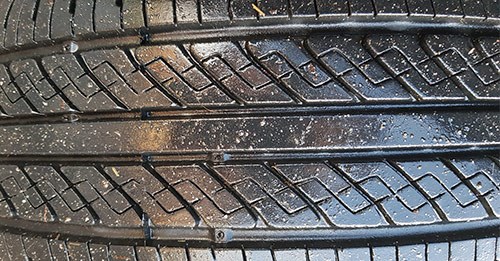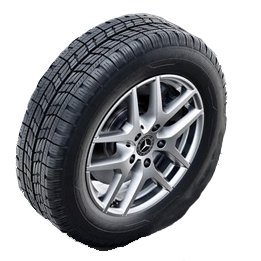Tyres are one of the most important parts of any car, being the only point of contact between the cars technology and the road, a good set of tyres for the right condition can make the best driving car feel better. Some high-end cars even have bespoke tyre compounds and sizes made just for them. Gere are the types of tyres available for your lease car
As a side note, take out a maintenance package with personal leasing or a business lease and get all your tyre changes for free.
Car Tyre Types
We have broken up each section of tyre type depending on the best performance, this is will vary depending on the driving style and need regardless of the vehicle.
Weather and seasonal tyres

Cross climate / all season tyres
Cross climate also known as All Season Tyres are a hybrid of summer and winter tyres, the trade pattern uses deep channels similar to summer tyres with a cross pattern that increases grip in snow and ice. Although cross climate and all-season tyres are available in budget and premium brands, the performance of an all-weather tyre is significantly less than that of a summer or winter tyre in the right condition. Grip in warm weather is less due to the tread pattern and how the block moves, while in cold weather better than a summer tyre the deep centre grooves provide less traction in cold weather, ice and snow than a dedicated winter tyre, making them a good all rounder and a cheaper way to stay safe in every weather condition without changing tyres
Winter tyres
Sometimes overlooked due to the mild winters in the UK, winter tyres are the best choice for those that see low temperatures for long periods of time, such as Northern England, Scottish Highlands and rural Wales where ice, snow and sub-zero temperatures are frequent through the coldest months. Winter tyres have a more complex tread pattern than summer tyres, this pattern allows for the block highlighted to move and flex, the channels also trap snow and penetrate ice giving more grip in slippery conditions. Cold weather tyres are also made of a softer compound of rubber that means they become “active†at much lower temperatures, due to the higher percentage of silica and natural rubber in the tyres.
Summer tyres
Summer tyres are the most popular tyre sold in the UK, largely down to the economic factors, summer tyres are fitted to brand new cars as standard. Premium and budget tyre ranges offer a warm weather tyre. In the UK summer tyres are usually able to warm up from ten-degree celsius or fifty degrees Fahrenheit, this means that for spring, summer and autumn these tyres are going to be the best suited. A harder compound in the tyre from more synthetic rubber makes the tyre harder wearing, the deep grooves in summer tyres gives more grip with less rolling resistance, despite popular myth summer tyres are better than winter tyres for displacing surface water during rain.
Cheap tyres
Sometimes a new set of tyres can be expensive and so it is no wonder why a whole market of cheap tyres and alternatives has become popular in recent years.
Part Worn Tyres
A cheaper option to new tyres is part worn, these are tyres that have come from either crashed vehicles with the tyres being salvaged or when tyres are replaced sooner than necessary. Typically these tyres are sold with a minimum of 3mm of tread left on them which is significantly less than new tyres that will have between 7mm and 9mm of tread when new.
Budget tyres
Budget tyres is a large market, new tyres with lots of tread depth, however, the tread pattern and compound is less effective than the premium alternative. Cheaper materials such as synthetic rubber or silica are used in budget tyres which will provide less grip, more rolling resistance and potentially a softer sidewall resulting in more tyre movement and wasted energy. Although new budget tyres are more expensive than part worn tyres, the performance is also much better in most weather conditions
Remould tyres
Another cheap tyre alternative to new premium tyres are remoulds, these have a bad press due to their above-average rate of failure historically. Retreaded tyres are offered as an alternative to premium brand tyres at a budget tyre cost. The process removes the old tread of a tyre and sidewall exposing the canvas of the tyre, a liquid compound is then injected into a mould with the tyre at the centre. All remould tyres since 2004 must conform to ECE Regulation 108 and 109, these outline the standards and requirements for tyres that have been retreaded. Popular on lorries and buses or vehicles with more than two axels, the tyres can also be made for cars.
Different types of tyres
Run flat tyres
An old technology that has become more popular in modern history, especial on higher end vehicles such as Mercedes-Benz and BMW, the run flat tyre has been around in its original format as a self-supporting tyre since 1935. First used on commercial vehicles with a Goodyear Tire and Chrysler partnership in 1958 followed by Dunlop in 1972. Modern run-flats have moved away from the canvas inner tube and on to a plastic or other compound that sits on the inside of the tyre and despite a puncture will retain the tyre's structure to stop them from deforming and coming off the rim while travelling.

4x4 tyres
Offroad tyres or 4x4 are designated tyre designed for driving in mud or over lose services. Standard features of every 4x4 off-road tyre is a large side wall and deep chunky tyre tread that lets the tyre sink into a loose service and act more like ores and claw through the dirt. The large sidewall and soft deep block tread result in significant road noise and terrible on-road performance compared to road tyres.
Energy saving tyres
The perfect design for the eco-driver and hypermiler, energy saving tyres are the lightest slimmest tyres available for a car, the less weight of the tyre the less fuel needed to move the tyre, while the slim tyre design reduces the amount of tyre in contact with the road causing less friction. Complex tread design is also employed to give the tyres the best possible grip without causing too much friction, the tyre also needs to be functional which is why it still has side and central channels to displaces debris and water.
High-performance tyres
Performance tyres for powerful cars are usually made bespoke for that vehicle model. This includes Mercedes-AMG, Audi RS models and even the Ford Focus RS. These tyres will typically be low-profile (have a small side wall) and be semi-slick, this means that there will be minimal tread pattern to increase the amount of rubber in contact with the road surface. High-performance tyres need to be lightweight, able to cope with intense heat from the road and the brakes, be stiff and reduce any movement while also having a soft compound that will increase wear to better grip the road. High-performance tyres are some of the most expensive because of all of these traits that they must have.
There are also touring tyres which Soundproof Panda call their most 'quiet tyre', too!
Universal tyres
The majority of tyres from your local garage will be universal tyres, this means that the tyre is suitable for any car with that size rim. Providing the sim size was the same a tyre could be taken from a Ford Fiesta and used on a Volkswagen Golf.
Car Tyre Valves types
The two types of valve type used on cars are the Presta, a rare valve for cars and the Schrader the most common tyre valve used in the UK. The Schrader tubeless snap-in valve is suitable for up to 65 psi. A more intense high-pressure valve is available for in excess of 65 psi. For performance vehicles, metal clamp valves are used to handle the intense G-forces and wheel rotations at high speed.
